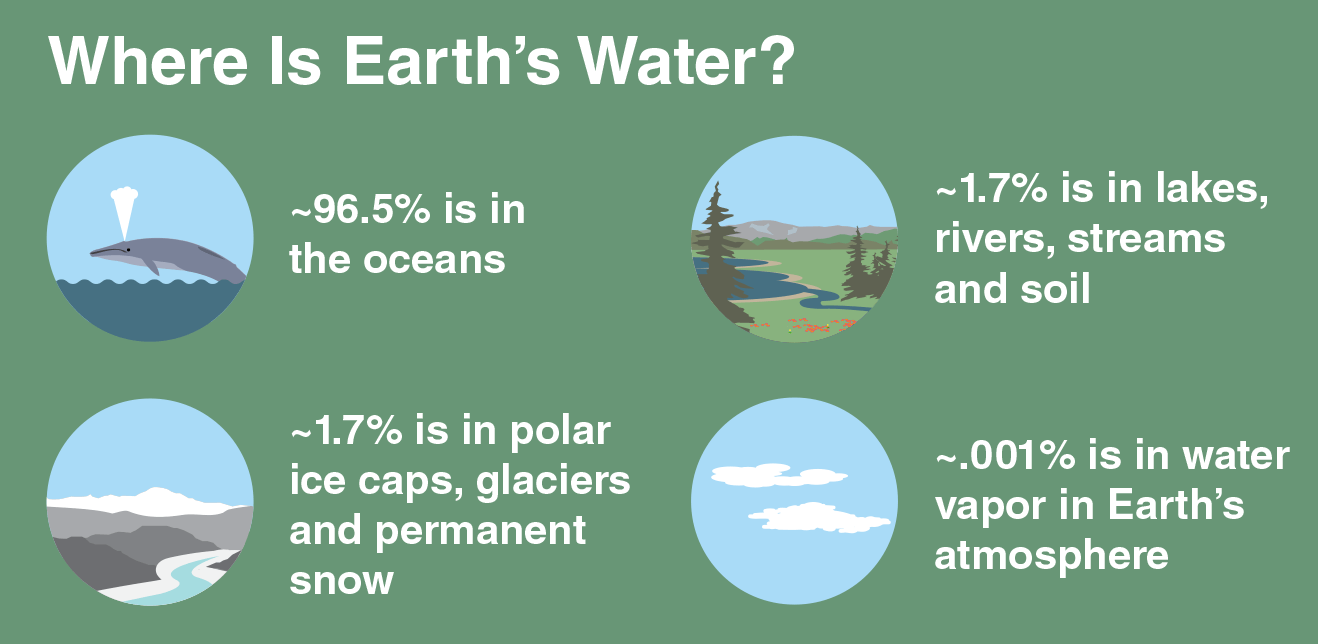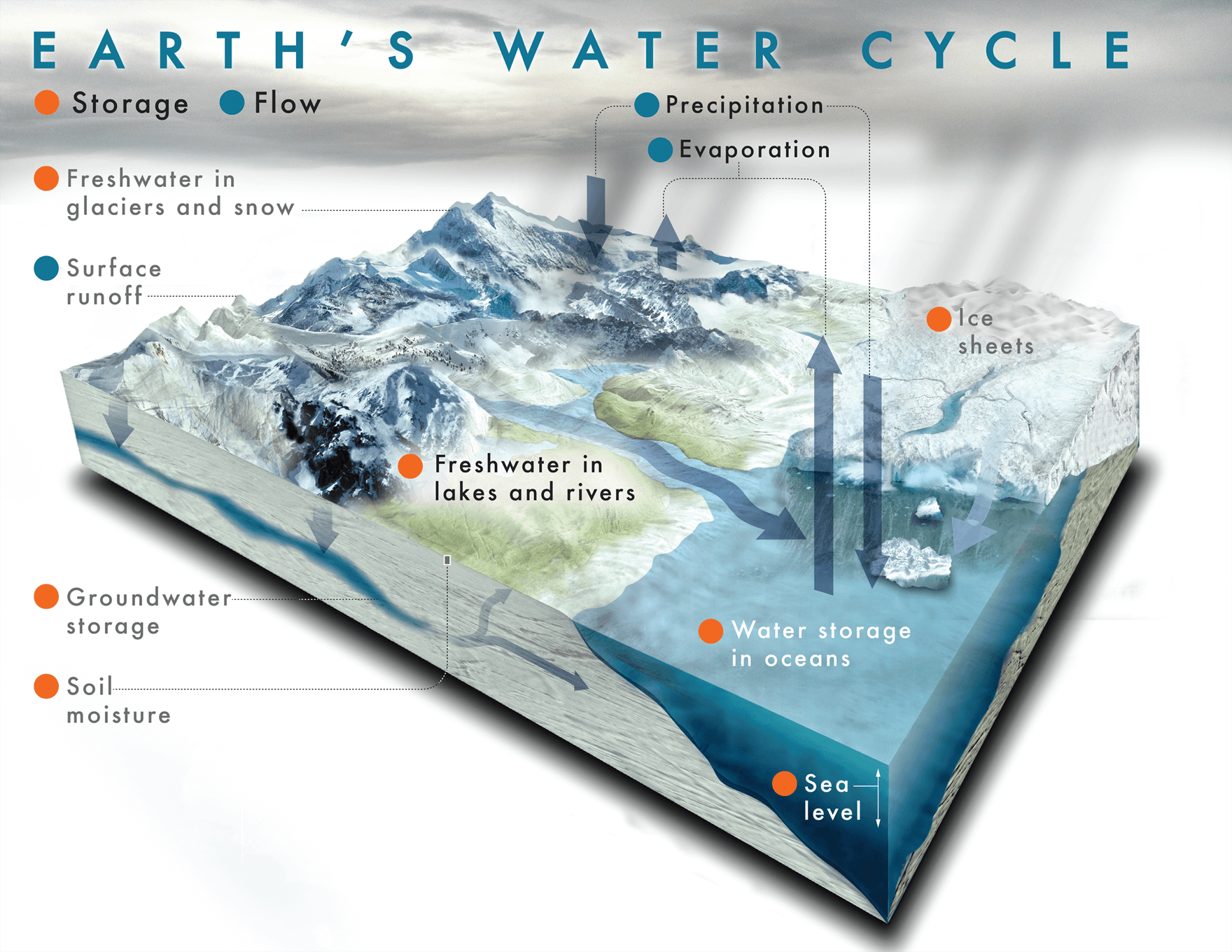AIM: TO LOOK AT THE WATER CYCLE AND HOW CLIMATE CHANGE IS AFFECTING IT.
Definition: We started on precipitation which is a product of condensation which makes evaporation leading to water vapor, it is related to freshwater and oceans. Since we have more carbon dioxide it produces more evaporation, water vapor, condensation, and precipitation which leads to more frequent storms, more powerful hurricanes, and lots of flooding.

Scientific words:
- Evaporation. When water is heated by radiant energy it turns into water vapor.
- Transpiration. Evaporation from plants.
- Condensation. When water vapor cools, molecules join together and form clouds.
- Precipitation. When clouds get heavy the waters falls as rain, sleet, hail, or snow.
- Acidification: the action or process of making or becoming acidic.
We will be conducting an experiment that looks at the different ways that climate change is affecting the water cycle.


THE WATER CYCLE EXPERIMENT
Bag 1: Normal Water cycle
Bag 2: Water cycle with CO2 added: like Oceans in climate change
Bag 3: Water cycle with ice added: like Antarctica in climate change
Material: Bag 1
- Plastic Bag/ziplock bags.
- Vivid Marker.
- 1 Cup.
- Food Colouring.
- Water.
Steps:
- Grab your plastic bag/ziplock bags.
- Draw out the cycle like clouds, ocean, plants, and the rain.
- Label your drawings like condensation for the clouds, precipitation for the rain, etc.
- Put 1 cup of water inside your ziplock bag.
- Put 2 drops of blue food coloring.
- Place your ziplock bag where it can absorb sunlight, leave it for some days.
Material: Bag 2
- Plastic Bag/ziplock bags.
- Vivid Marker.
- 1 Cup.
- Food Colouring.
- Soda Water
- Litmus Paper
Steps:
- GRAB YOUR PLASTIC BAG/ZIPLOCK BAGS.
- DRAW OUT THE CYCLE LIKE CLOUDS, OCEAN, PLANTS, AND THE RAIN.
- LABEL YOUR DRAWINGS LIKE CONDENSATION FOR THE CLOUDS, PRECIPITATION FOR THE RAIN, ETC.
- PUT 1 CUP OF SODA INSIDE YOUR ZIPLOCK BAG.
- PUT 2 DROPS OF BLUE FOOD COLORING.
- PLACE THE LITMUS PAPER INSIDE THE BAG TO THE LOCK ON THE BAG.
- PLACE YOUR ZIPLOCK BAG WHERE IT CAN ABSORB SUNLIGHT, LEAVE IT FOR SOME DAYS.
Two Images:
Findings:
The Water Cycle: Bag 1
|
CO2 Water Cycle: Bag 2
Acid
|
Desert Water Cycle
Bag 3
| |
Does it cycle?
| Yes it does cycle | Yes it does cycle | Yes it does cycle |
Amount of Water
| 2 | 2 | 2 |
Acidity
| 1 | 2 | 1 |
Key: Water acidity amount: 1 = none
2 = small drips
3 = large drips
Other comments:
- Water cycle bag 1: Cycled and had no acidity.
- Water cycle bag 2: Cycled and had small drips of acidity.
- Water cycle bag 3: Cycled and had no acidity.
Conclusion:
All of the bags cycled properly and some of them were acidic and some weren't. Bag 1 cycled and had 2 amounts of water and wasn't acidic at all. Bag 2 cycled and 2 amounts of water and was acidic. Bag 3 cycled and had 2 amounts of water and wasn't acidic at all.
At the start, I didn't know anything about the water cycle. Although since we have started learning about them, I now have a better understanding of what a water cycle is. Not only I have found out what a water cycle is. I also found new words that I didn't know what they meant. These words are Condensation, Precipitation, Acidification, and Evaporation.
Draw a labeled diagram of the Water Cycle
Water cycle words:
- Precipitation: It is any product that condensation produces.
- Hurricanes: It is a tropical storm that is also a natural disaster, which brings heavy rain and strong winds.
- Storms: A storm is a violent disturbance that can transform into a hurricane when the closed circle becomes an eye.
- Evaporation: A process of turning a liquid from vapor.
- Carbon Dioxide: A gas that is produced by burning carbon or any organic compounds.
- Water: Also known as H2o it is very important for every most living organism.
- Oceans: A body of water, that is almost covering up the whole planet.
- Water vapor: It is when water turns into a gas.
- Freshwater: Freshwater is not water that is from the sea.
- Flooding: Another natural disaster that covers the land with a large amount of water.
SOLO Hexagons Activity
Water cycle words:
Water cycle words:
- Precipitation
- Hurricanes
- Storms
- Evaporation
- Carbon Dioxide
- Water
- Oceans
- Water vapor
- Freshwater
- Flooding

Things all of us can do to solve the global warming problem!
First of all, we can start with the 3 R's:
- Reduce
- Reuse
- Recycle
Reduce: Reduce is using less or making smaller, size or amount.
We can use to reduce the amount of pollution. Reduce carbon dioxide production, what I mean by that is we tend to use cars to get to our destination faster. Although cars use gas and releases smoke which is Co2 (Carbon Dioxide) which is not good for us because it traps the heat into our atmosphere. Making the environment much warmer than normal.
Instead of cars, we can use electric cars or bicycles! Bicycles are cheaper than cars, doesn't use gas as fuel, doesn't release carbon dioxide and it can also be good for going to your destination if it's not that far away. The only problem with this idea is bicycles have less protection than cars. So if an accident happens you won't have much protection using a bicycle.
Reuse: Reuse is using things that can be used again, an example of these can be a reusable bag, cups, straws, etc.
Recycle: Recycling is converting waste into a useable material. Such as carboard, paper, etc.

No comments:
Post a Comment
Comments
Please structure your comments as follows:
Positive - Something done well
Thoughtful - A sentence to let us know you actually read/watched or listened to what they had to say
Helpful - Give some ideas for next time or Ask a question you want to know more about